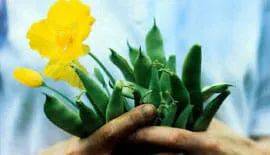“The biggest problem I encountered was with the Phlox I planted,” Dan wrote. “The leaves developed a terrible fungus and it slowed its growth terribly. When I first spotted it, I did some research and decided to use an organic fungicide. That worked alright, but the fungus came back. Then, I tried an organic remedy I found on the internet: spraying with a milk solution. That worked less well. The poor plants were so overcome with the black fungus that they eventually withered without flowering late in the summer. I finally cut them down. Now they are starting back with strong green growth and I’m pleased, but I wondered if you had any advice for treating Phlox fungus.”One of the best non-chemical ways to deal with powdery mildew, I replied, which Phlox paniculata is so prone to in our humid summer
Pests & diseases Ideas, Tips & Guides
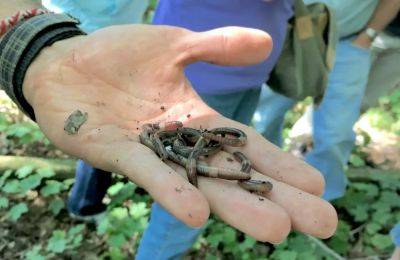
Coping with invasive jumping worms, with brad herrick of uw-madison
THE QUESTION “What do I do about the Asian jumping worms that are destroying my soil?” has outpaced what was the most common thing I was asked, year in and year out, for decades as a garden writer—the relatively simple challenge of “How do I prune my hydrangea?”

Another hit: my accident-prone lacebark pine
This long-needled pine, grown for its beautiful, peeling bark that resembles camouflage fabric, just gets better with age—or is supposed to, as long as it lives that long. But now in addition to substantial disfigurement left by an insistent male yellow-bellied sapsucker a year or so ago, my beautiful bark has giant divots in it, too (you can see both in the top photo). Weren’t the woodpecker’s rows of small holes and the oozing, now-blackened sap that poured out from them, enough for the one poor tree (and gardener)?Apparently not.A storm with high winds took two large branches and one smaller one from the pine a week or so ago, snapping them right o
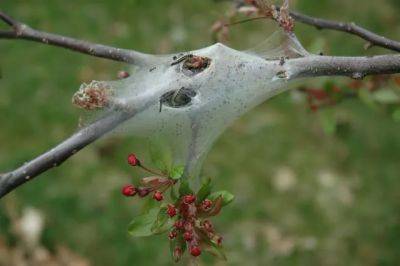
Calling all caterpillars
Each Eastern tent caterpillar overwintered as part of a mass of several hundred eggs, and hatched in early spring to get ready to start eating. Fruit-tree foliage, including that of crabapples, is on their preferred diet, so I make a habit of destroying all the masses I can get to in my 10 crabapple trees, and elsewhere around the yard. I’m not going to single-handedly knock back the entire population, of course, but this simple, non-toxic tactic does reduce the damage to my trees so I can enjoy them in my landscape with leaves, instead of without.I simply use the piece of bamboo cane to remove the nest, inserting the tip into the structure and twisting gently till all the sticky, web-like bits (and the caterpillars) are on the stick. I deposit the contents on the ground near my shoe, and step on it for good measu
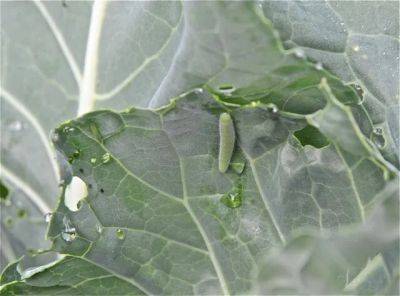
Caterpillar alert: who’s eating my cabbage and broccoli?
Though I cannot see without a hand magnifying lens if they have the requisite tiny markings, I’m betting from its overall appearance and velvety surface that this is the larval stage of the cabbage white butterfly, Pieris rapae, because I have also seen its adult stage flying around, a smallish butterfly with a couple of smudgy spots on each white wing.This article from Missouri Botanical Garden is extremely detailed on my latest visitor, also known as the imported cabbage worm, and other pests of cabbage relatives, including cabbage looper and the caterpillar of the diamondback moth. The latter two caterpillars are smooth, not velvety, among other clues to differentiating among the three.As with all caterpillars, these can be controlle

3 links worth a busy gardener’s browsing time
BASIL DISASTER? I always enjoy Adrian Higgins’s pieces in The Washington Post, though I suppose enjoy isn’t the right word for a story about how a fungal disease is making basil harder to cultivate successfully. Downy mildew—not a new affliction in greenhouses and gardens, but newish to basil in particular—is on the march. Get the details in this great story.A WEED BY ANY OTHER NAME? A couple of weeks ago, esteemed senior research scientist Peter Del Tredici of the Arnold Arboretum was interviewed in The Boston Globe, and shared his view

Mole patrol
A cat who goes out each night (like Jack the Demon Cat, top), and a lot of mousetraps.First order of importance: Make sure you know what you’re fighting, since seeing mounded soil or tunnel-like activity in lawns and beds doesn’t always mean moles. Know thy enemy. An interesting interview with a wildlife expert in the Seattle paper awhile back offered a test to determine whether it’s moles or voles you’ve got.“Gardens that border wild areas probably have both moles and voles,” the piece reported. “To find ou

Nuisance wildlife control in gardens, with ohio state’s marne titchenell
All these animals are usually lumped in the general catchall of “nuisance wildlife,” but it’s critical to know specifically who you’re up against, to do the best possible job at prevention, or to devise a safe, sane and humane solution, if the unwanted animal is already in residence.For advice, I called Marne Titchenell of Ohio State University. She is a wildlife program specialist in OSU’s College of Food, Agricultural and Environmental Sciences, and when I read about the popular workshop she gives to gardeners called, “The Good, the Bad and the Hungry: Controlling Nuisance Wildlife in
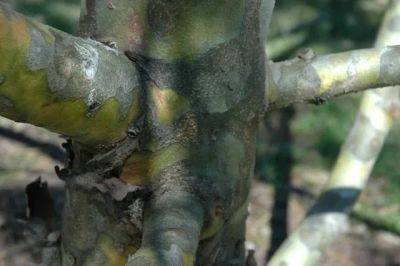
Not blooming, but (was) beautiful
Under normal circumstances, the bark on P. bungeana’s muscular trunk begins to peel off as the plant matures, and leaves behind a camouflage pattern of greens and yellows and tans. By pruning out some of its evergreen branches and opening up the structure of the plant, you can get a great view of the show from every angle, every day.Mine was really shaping up, getting to be a proper tree. And then HE showed up, the same male sapsucker who spent much of the winter in one of my older magnolias, the same guy who drums on the siding outside my bedroom to stake a claim to the territory in spring, to act really macho. In just a few days of visiting the pine, he’d opened up holes in a large section of the formerly

‘making more plants’ with ken druse (and how to avoid damping off)
Like all of Ken’s 18 books (!!!), “Making More Plants: The Science, Art and Joy of Propagation” is rich in instruction, but also visually arresting, since he’s an award-winning photographer, too. It covers the botany of propagation—the why’s behind how you can make more plants of a particular species sexually or asexually or both—because as Ken says:“It is not essential to learn about botany to garden well; it’s inevitable.”Then in words and intimate pictures he covers virtually every tactic for doing so, from seed-sowing to leaf and root cuttings, to layering, grafting, division and more. The photos are so beautiful, and Ken’s obvious enthusiasm so evident on every page, that I want to try everything. (Just what I nee
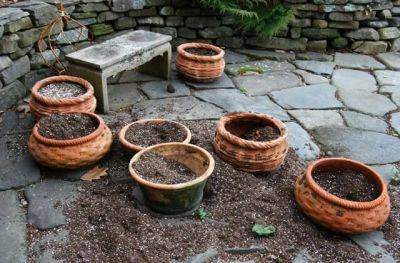
The skunks vs. margaret, round 1
GARDENING WITH SKUNKS isn’t a phrase that rolls off the tongue, the way “…with deer,” or “…with rabbits” might. But here at A Way to Garden, outsmarting awakening skunks is one of spring’s first challenges.
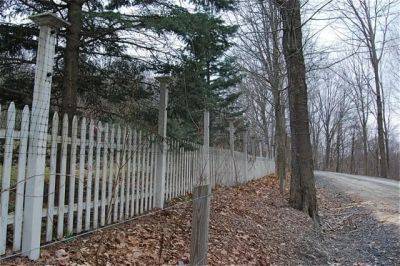
Just saying no to deer, with fencing
Fencing is the only real deer-proofing method there is (assuming your fence is the right construction for your location and animal population, and is well-maintained). No other tactic offers complete control, keeping deer out of the garden.Even “deerproof” plants had proved deer-resistant at best, and besides, the garden-design limitations such lists impose provide insufferable restriction for someone like me, who can’t resist a hot plant. I’m as much an omnivore as the deer; we just couldn’t cohabitate peacefully.The garden’s backbone—its woody plants—were being disfigured. Forget the occasional hosta stripped of its leaves (above); ugly, yes, but it sent up new growth r
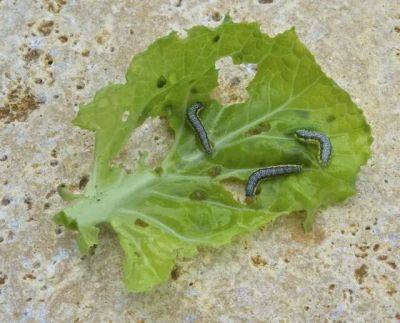
Latest brassica pest: cross-striped cabbage worm
(They’re also really beautiful, if you look at them up close–but beautiful in the way that Japanese beetles are beautiful, meaning not enough for me to count them as beloved pets and keep them around or anything.) Squish!The cross-striped cabbage worm larvae are sort of blue-gray, and as their name suggests striped across their bodies. Not so many years back, it was more a pest in Southern farms and gardens, but has gradually made its way to southern New England, at least. I read up on them in various places–U-Mass Amherst; at the University of Georgia, and so on–and what I conc
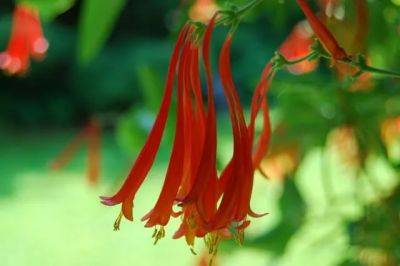
In praise of honeysuckles (aphids be damned)
I gave L. sempervirens (Zones 4-9), whose woody stems twist around the corner post on my back porch the last decade, a serious pruning last year, after it seemed to have a lot of leggy growth that was especially appealing to the aphids. It has responded really favorably: heavy bloom and stronger growth after a year of recovery.Its far more subtle yellow-flowered cousin (above), L.s. ‘Flava’ or ‘Sulphurea,’ hasn’t really been troubled by insects here in all the years I’ve had it, and seems content to grow in part shade, not just full sun, an added blessing. If you will only have one sempervirens, maybe this should be it? (Hint, hint.)The L. heckrottii hybrid called ‘Goldflame’ (above, Zone 5-9) has been around for years and is also sold as ‘Pink Lemona
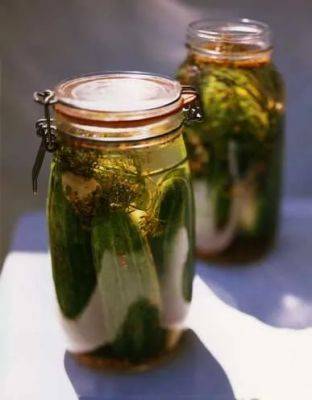
Into the drink: making pickles, drowning beetles
LIKE CLOCKWORK THEY START TO APPEAR ABOUT NOW: A first harvest of cucumbers, and also one of Japanese beetles. Into separate and quite different “brines” they go as fast as they develop, one a vinegar-salt formula, the latter a bit bubbly.
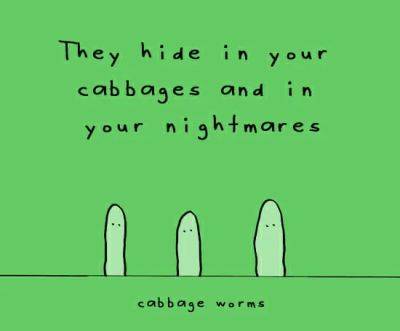
Doodle by andre: it’s an infestation!
Starting in spring, I see the smallish white butterflies with smudgy spots on their wings–called cabbage whites, the adult stage of the imported cabbage worm–a signal that the cycle is beginning again. They are often one of the first butterflies to fly here each season.Growing crucifers under fabric row cover can reduce the opportunities for egg-laying. I then hand-pick worms that did manage to get hatched on any plants–another effective, non-toxic tactic that works if you check your plants daily, and merely have a home-garden-sized plot. Those steps, plus the need
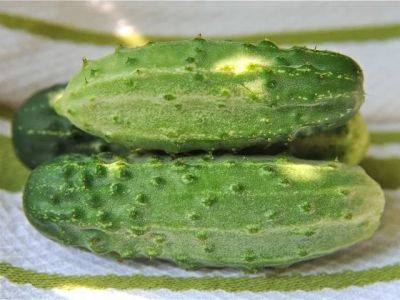
Misshapen, bitter cucumbers, or no fruit on zucchini? some timely answers why
AROUND THIS TIME OF SUMMER everyone wants to know why their cucumbers are misshapen or bitter (or absent!), or their zucchini has lots of flowers, but no courgettes…yet. This story provides the answers.

Wet-year tomato troubles: the plot sickens
I’m thinking the nearly 6 inches of additional rain this last week won’t exactly be providing any curative effects, either.What’s wrong with my fruit? The plants they came from look otherwise-healthy (all are hybrid paste types; my heirlooms are on the critical list already, having no built-in disease resistance, apparently, to whatever ails me). I
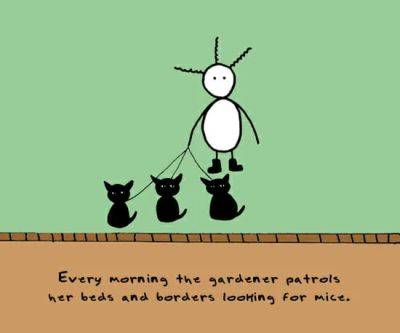
Garden cleanup: targeting mice and voles
As with any animal or insect pests, the work starts with reducing habitat—especially places they can overwinter. Close-cutting the entire lawn here is one of the final things I do in late fall, lowering the deck to 3 inches to reduce places to hide in general.For mice and voles, it’s essential to install fine-gauge hardware-cloth collars (or heavy plastic ones) around young trees, in particular, though these and other rodents will chew wood young or old if hungry. It’s especially to make sure that the immediate area at the base of trees is clear. Friends with orchards do not allow turf to

Groundhog day: john burroughs on a flabby beast
I HAVE LITTLE (NOTHING?) GOOD TO SAY about woodchucks, Marmota monax, even on their namesake Groundhog Day today. The only American animal with a holiday named for it simply makes me crazy by using my garden as a banquet table in any year he manages to get a foothold. My favorite nature writer, John Burroughs (1837-1921), didn’t have much use for the beasts, either—though he did name one of his Catskill Mountain houses Woodchuck Lodge.
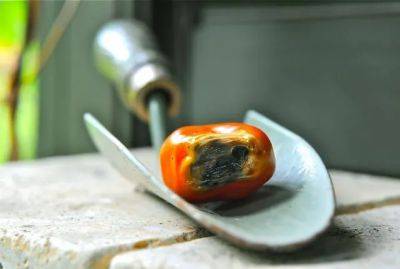
Tomato health check: blossom end rot, anyone?
Blossom end rot, which (just as it sounds) is a rotting of the fruit that begins as a watery spot on the blossom end, also affects peppers and eggplants. It’s a physiologic disorder—not something caused by a virus or fungus or bacteria, like so many other tomato ailments, but rather by physical stressors that prevent the fruit from taking up enough Calcium to come to ripeness in prime condition.The watery spot transitions to a dry, sunken lesion (it looks as good as it sounds, above, served up on a non-silver spoon).Why the deficiency of Calcium, though? What did I do wrong? Various factors can bring it about, including soil that suddenly goes dry (as in a fierce heatwave), excessive fluctuations in soil moisture, over-application of high-Nitrogen fertilizers (not guilty!), roo
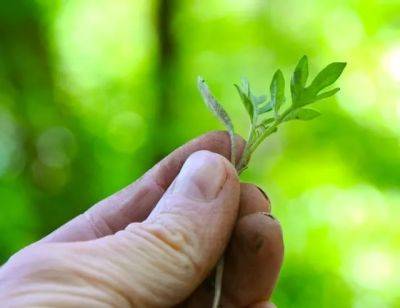
Why i pull out every self-sown tomato, or else
AFTER PULLING THE FIRST FEW VOLUNTEER TOMATO seedlings just now, I thought I’d better come indoors and remind you to do the same as they occur in your garden. I know, it’s always hard to uproot “free” babies like this.
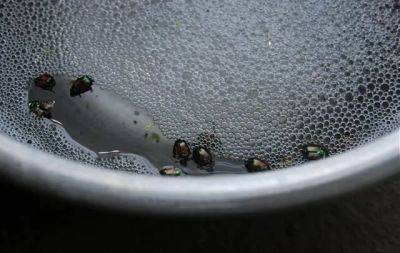
(japanese) beetle juice
Besides drowning Japanese beetles in bowls of soapy water, I have my eye on some rabbits who seem to be working their way through the place. Wish my neighbor, Herb, who has a knack for trapping every manner of thing, hadn’t gone to Maine for the summer. Herb? Oh, Herb?With the Japanese beetles, I’m long past the beetle-bag phase of my gardening career. I think that those l
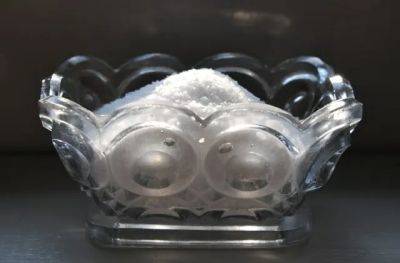
4 links: help with salty pickles, ticks, seed saving
THANK YOU DEB PERELMAN OF SMITTEN KITCHEN, who cooks up a giant food blog from her tiny, 42-square-foot New York City kitchen. Just in time for peak pickling season, Deb unlocked the riddle that had been puzzling her (and me) for years: why recipes come out too salty sometimes and not others. Turns out that not all brands of Kosher salt (shown above, in my Grandma’s glass salt cellar) are created equal. The scoop from Deb (thank you, thank you).WANT TO USE LESS CHEMICALS in and around the home and garden? Who doesn’t? Beyond Pesticides dot org is an essential resource to help in the plight. Just look at this list of factsheets (each a PDF). I love the one on “Reading Your Lawn Weeds,” for instance, a tactic that will really help you think before dumping on some needless toxin; you can find it partway down this page of theirs, at the link
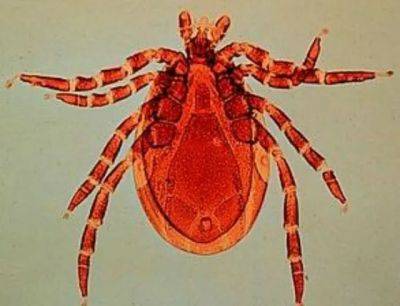
The latest on backyard tick research, with dr. neeta connally
In the fall of 2016, Dr. Connally won a $1.6 million grant from the Centers for Disease Control to fund a four-year study, in coordination with the University of Rhode Island, to gauge the effectiveness of various tick control methods in the areas around people’s homes. She’ll tell us more about the angles being pursued, and also about self-care topics, from treated clothing to the use of topical repellents and more.Read along as you listen to the Dec. 11, 2017 edition of my public-radio show and podcast using the player below. You can subscribe to all future editions on iTunes or Stitcher (and browse my archive of podcasts here).backyard tick research, with dr. neeta connallyQ. A little context first: You’re in the Northeast, where a lot of the cases of Lyme in the United States occur, but there are multiple tick species around the nation. You

Galls, leaf mines and other tracks and signs of insects (win a field guide!)
Charley Eiseman and Noah Charney’s 2010 book is full of photos of all the oddball things you see outside (if you stop long enough to notice!): egg cases and cocoons and all kinds of webs; folded and curled-up leaves as if something’s hidden inside (it is!); and all manner of bumps, lumps, notches, and holes in foliage, bark, you name it. Even tiny previously unexplained pattern in the sand…and soil…a.k.a. tracks and signs of insects.“I’ve always been interested in everything around me,” says Charley, whose Master’s degree is from the University of Vermont’s field naturalist program. “Then someone gave me a digital camera right after I graduated from college, so I started paying closer attention to the little things. And then I started wishing I had a field guide to tell me what all these signs left by insects and other invertebrates were—but it just didn’t seem to exist.”Charley and Noah took it upon themselves to create that guide, in “Tracks and Sign of Insect
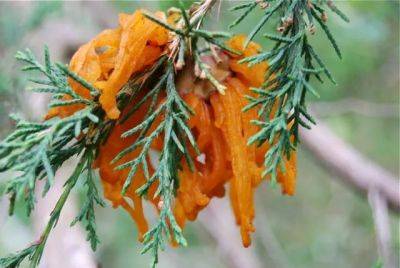
Trouble in paradise: galls, beetles & more woes
CEDAR APPLE RUST is having a banner year here. So what do you do when you live with warring roommates? In the case of the back-and-forth rounds of battle between the towering Eastern red cedar (Juniperus virginiana) in my front yard and all apples and apple relatives around the place, nothing.Well, I do watch in fascination, especially at the stage of cedar apple rust above (a few weeks ago), when orange, almost gelatinous “telial horns” are developing where the cedar galls were last fall and winter. I don’t intervene, despite the havoc this fungus causes, particularly foliar damage and defoliation of apple relatives (the reason my shadbush, or Amelanchier, and my oldest of apples lose their leaves so early each year; the reason I don’t even try to grow hawthorns).Quince, crabapple and pear are some of the other plants similarly affected.

Since you asked: is copper sulfate a chemical?
SO IS COPPER SULFATE a chemical? I am not a chemist, but a gardener, so here is what I know with help from more expert sources:Pure copper sulfate is an inorganic compound that does occur naturally, but is more
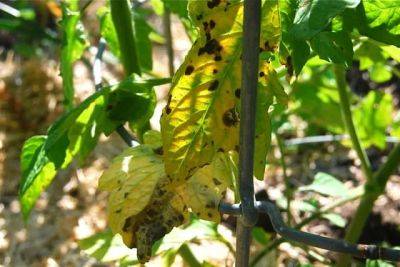
Tomato-troubles faq’s
Q. I am worried about another outbreak of late blight, after 2009’s epidemic. Can I do anything to prevent tomato disease? Q. What are those giant green caterpillars on my tomato plants? Q. My tomatoes flowered but didn’t set fruit. What’s up?Q. My tomato plants are sick or the fruit is disfigured (or both). Help!
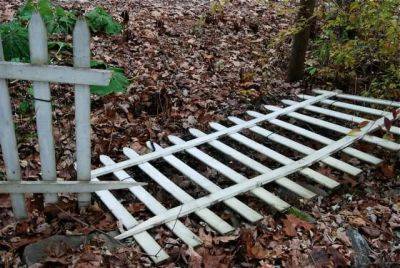
Gardening with bear (and other late arrivals)
Ten size-XL paw prints adorned the back porch; on the front welcome mat was deposited some apparently undesirable reject from the compost pile–not tasty enough, I guess. Feeding the birds? Not me, at least not right now. Project Feeder Watch, a bird-counting program with Cornell Lab of Ornithology that I look forward to each year (as you can read here), starts Saturday, but I think I’ll skip a week or two before I put out any more feeders. Extra-warm weather has at least one of the local bears on an extended feeding frenzy; the birds will have to be patient. After all, look what happened to the iron pole holding up the one feeder I

Toasting relocated ‘chucks on groundhog day
LET’S RAISE A GLASS TODAY TO RELOCATED GROUNDHOGS, toasting the ones we managed somehow to outsmart. That’s one such captive in the garbage can, above—remember?—about to be literally driven away from the garden (by a licensed nuisance-wildlife handler, since regular citizens are forbidden to relocate animals by law here).

Giveaway: ‘the tao of vegetable gardening,’ with carol deppe
She is someone I have often heard called a mentor and inspiration by some of my most respected garden friends, especially in the Pacific Northwest. No wonder, because Corvallis, Oregon-based Carol Deppe–also the author of the popular book “The Resilient Gardener”–is pragmatic, but also scientific in her approach, armed not only with precisely the right hoe for the job but also with a PhD in biology from Harvard and a long background in plant breeding.Read along as you listen to the March 30, 2015 edition of my public-radio show and podcast using the player below. You can subscribe to all future editions on iTunes or Stitcher (and browse my archive of podcasts here). We talked about choosing vegetables to grow in combination (and when some crops are most productive and easiest grown alone); about strategic steps to avoid late blight
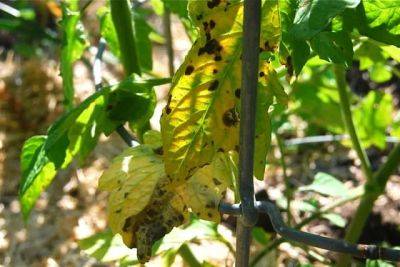
After the flood: tomato troubles in a wet year
I actually have no certain diagnosis; so many of these issues look somewhat alike, unless you are a plant pathologist, and so far I only have a relative few affected leaves. I nevertheless love Cornell’s diagnostic tool, a photo-driven system arranged by plant part (leaves, stem, fruit).What I do not seem to have, thankfully, is the late blight that’s been the source of the most dramatic headlines, and of a thorough story by Adrian Higgins of The Washington Post, late last week. This dramatic outbreak has also prompted warning bulletins from Cornell and other extension services. My plants have none of its characteristic early sign: dark stem lesions.This is the affliction (affecting tomatoes and potatoes) that caused the 1840s Irish Potato Famine, and it has never been recorded this early in the United States, apparently, nor this extensive
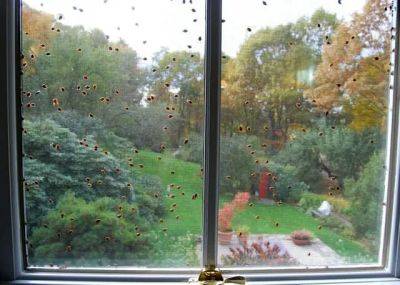
The mixed blessing of the asian lady beetle
These non-native “ladybugs,” introduced by the Department of Agriculture to help combat certain agricultural pests, have made themselves right at home in America—and in my house, too. In fall, the south-facing side of the exterior can be teeming with patches of them, as they look for places to tuck into and overwinter. The USDA imported lady beetles from Japan as early as 1916 as a beneficial insect, to gobble up unwanted pests on forest and orchard trees, but it was probably later releases, in the late 1970s and early 80s in the Southeast, that took hold. Today, multicolored Asian lady beetles have made themselves completely at home around the United States, easily adapting to regions as diverse as Louisiana, Oregon, and mine in New York State.
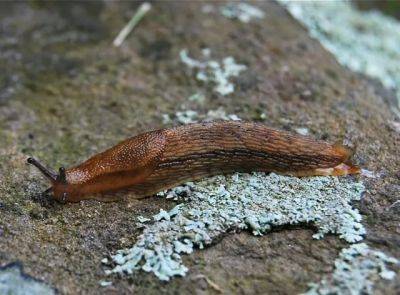
Slug control, with a little help from my friends
Eliminate hiding places. Wilted or slightly decaying foliage left in the garden can provide perfect hiding places, as it often bends to touch the ground. This week, now that things have dried a bit so I can get into the beds, a more ruthless approach to cutbacks than normal is scheduled, since the extreme rains caused so much excess, often floppy, growth.Don’t over-mulch. One to perhaps 2½ inches of mulch is desirable; layering on thicker amounts than about 3 inches just invites damp conditions that slugs love, plus it provides a great place to hide.Set out safe baits or traps. There are self-described “nontoxic” slug baits these days (though research institutions like Cornell use the term “low-toxicity,” which is probably

Gardening links: japanese beetle help, rain barrels
I HAVE SEEN FEWER JAPANESE BEETLES so far this season, one of the only side benefits of a dry spring and summer, since eggs and young grubs fare worse in dry turf. Permanent beetle decline would be a great thing, so I’m thrilled to read of advances in infecting beetles with a pathogen called Ovavesicula that may someday lead to better chemical-free control throughout the pest’s range.The latest bright moment: Entomologist Dr. David Smitley and others at Michigan State University are actually having a Japanese Beetle Biocontrol Field Day July 28, where gardeners can take home infected beetles to release in their yards where they will in turn infect other beetles. I first read about it here.How the pathogen works: Infected beetles grubs don’t survive the winters as well (populations were reduced 25 to
Popular Topics
Our site greengrove.cc offers you to spend great time reading Pests & diseases latest Tips & Guides. Enjoy scrolling Pests & diseases Tips & Guides to learn more. Stay tuned following daily updates of Pests & diseases hacks and apply them in your real life. Be sure, you won’t regret entering the site once, because here you will find a lot of useful Pests & diseases stuff that will help you a lot in your daily life! Check it out yourself!
